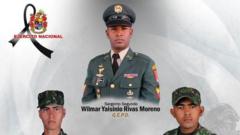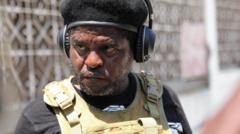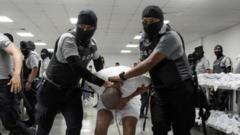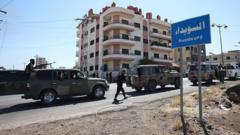In Colombia, a surge in the webcam modeling industry has seen schoolgirls targeted for sexual exploitation, with many recounting stories of coercion and abuse. Despite the legal age restriction, studios circumvent regulations using fake IDs, leading to devastating consequences for young models.
Colombian Schoolgirls Lured into Webcam Modeling: A Stolen Innocence

Colombian Schoolgirls Lured into Webcam Modeling: A Stolen Innocence
Young women recount their harrowing experiences being recruited into the webcam industry while still in school, highlighting the perils and exploitative practices that continue to plague the sector.
Isabella, now 20, started working as a webcam model at just 17 after being handed a leaflet enticing schoolgirls with the promise of easy money. With a toddler to support, she felt she had little choice but to visit a local sexcam studio in Bogotá, where what she discovered was far from what she'd imagined. The studio, set up in a dilapidated house with multiple rooms resembling bedrooms, soon pulled Isabella into an exploitative world where she was pushed to livestream from school and fulfill viewers' sexual requests while her classmates learned.
Despite it being illegal for studios to hire models under the age of 18, many studios in Colombia flout the law with underage girls often found working as models. Isabella reported having no formal contract or guidance when she began her work and recounts how her desperation led her to engage in degrading acts while trying to provide for her child.
Colombia now leads the globe with over 400,000 webcam models, according to industry reports, with its market rapidly expanding amid poverty and limited job opportunities. Studio owners often lure young women with false promises of financial independence. Yet, the industry is rife with abuse, and studios reportedly manipulate practices to hire underage models by reusing accounts of those of legal age or providing false identification.
Keiny, a model who began at 17 to support her family, reflects on the troubling aspects of the industry, with clients frequently preferring performers who appear younger. Although she earns significantly more than Colombia's minimum wage now, she recalls the pressure to comply with client requests that made her uncomfortable.
While some studios present safe working environments, others exploit models financially—taking a large percentage of their earnings and enforcing grueling working conditions. Reports reveal abusive situations in which models are coerced into painful performances, with many survivors reluctant to speak out for fear of losing their meager incomes.
The plight of these young women raises serious concerns about the ethical operations of the webcam industry, as many models remain unaware of their rights and protections. As the Colombian government initiates legislative efforts aimed at reform, advocates urge stricter regulations to protect these vulnerable individuals and prevent further exploitation in an industry that has shown little regard for their welfare.
As Isabella seeks justice, joining forces with fellow survivors, she hopes to reclaim her dignity while confronting the lasting trauma that such early exploitation has inflicted on her life.
















